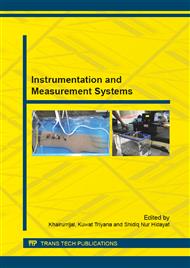p.59
p.63
p.68
p.72
p.76
p.80
p.84
p.88
p.92
Self-Powered Wireless Sensor for Forest-Fire Detection in Sumatera with Various Environmental Energy Source
Abstract:
This paper presents a fire sensor module which is powered by harvested energy from the surrounding environment. The complete system consists of a transmitter module that sources energy from a mini generator energized by wind and thermal energy. The presented green energy poweredfire sensor is environmentally friendly and can be mass produced at a very low cost. A prototype of the forest-fire sensor consisted of transmitter and receiver module of STM110 EnOcean Firma has been constructed. The fire-sensor module detects the presence of fire in the vicinity using an NTC (negative temperature coefficient) temperature sensor. The thermistor is mounted on the exterior of the prototype (casing) and its switch-temperature is set between 90°C and 95°C. A rapid rise in the temperature above the set switch-temperature causes a rapid change in the sensor resistance, indicating the presence of a nearby fire. In response, the sensor would send a telegram to the central station (receiver module).
Info:
Periodical:
Pages:
76-79
Citation:
Online since:
July 2015
Authors:
Keywords:
Price:
Сopyright:
© 2015 Trans Tech Publications Ltd. All Rights Reserved
Share:
Citation:


